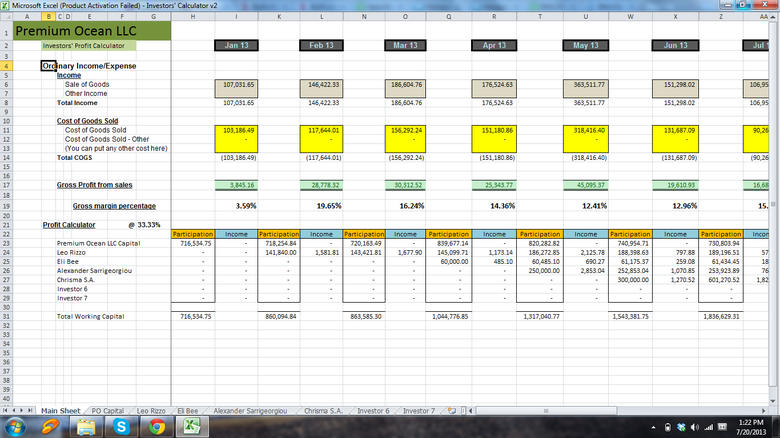How To Optain An Assumption Of Mortage Paperwork

Securing an assumption of mortgage paperwork is a vital process for anyone looking to take over an existing mortgage from a homeowner. This process, often referred to simply as mortgage assumption, can be beneficial in several ways, including potentially lower interest rates, reduced closing costs, and the ability to step into a home without the need for a new mortgage. This guide will walk you through the steps required to obtain the necessary paperwork for assuming a mortgage.
Understanding Mortgage Assumption

Mortgage assumption involves transferring the responsibilities of a mortgage from the current owner to a new buyer. Not all mortgages are assumable, so the first step is to determine if the existing mortgage can indeed be assumed.
- FHA Loans - These are generally assumable, but with certain conditions.
- VA Loans - They too are assumable, often requiring the buyer to be a military member or meet specific eligibility criteria.
- Conventional Loans - Typically not assumable, though there might be exceptions, especially with special lender clauses.
- Other Government Loans - USDA and other government-backed loans might have their own set of rules for assumption.
⚠️ Note: Contacting the lender directly can provide immediate clarification on the assumability of the mortgage.
Steps to Obtain Assumption of Mortgage Paperwork

Here's a detailed breakdown of how to proceed:
1. Verify the Mortgage's Assumability

Start by confirming with the lender that the mortgage can be assumed. Here's what you need to do:
- Request a copy of the original mortgage contract to check for assumability clauses.
- Check the Mortgage Electronic Registration Systems (MERS) if the loan is registered there for any special conditions.
2. Contact the Lender

Once assumability is confirmed, reach out to the lender for the following:
- Request an assumption application package.
- Inquire about any specific requirements or documentation needed.
3. Gather Financial Information

You'll need to provide extensive financial documentation:
- Latest pay stubs or proof of income.
- Tax returns for the last two years.
- Credit report, possibly requiring a tri-merge report.
- Bank statements for the last few months.
- Any additional assets or liabilities.
4. Complete the Assumption Application

Filling out the application thoroughly is crucial:
- Fill in all personal and financial details.
- Include the loan number and the property address.
- Sign where necessary, noting that both the buyer and seller might need to sign.
5. Obtain and Sign the Assumption Agreement

Once the application is approved:
- The lender will draft an assumption agreement which outlines terms, rates, and repayment responsibilities.
- Both parties must review and sign this document.
6. Await Lender Approval

After the agreement is signed, the lender will:
- Review all provided documents and run credit checks.
- May require an appraisal of the property to ensure its value aligns with the mortgage balance.
7. Closing and Finalizing the Assumption

At closing:
- The buyer pays closing costs, which can be lower than standard mortgage costs.
- The current mortgage holder is officially released from the mortgage liability.
Understanding Costs and Considerations

| Cost Type | Description | Typical Amount |
|---|---|---|
| Assumption Fee | Fee charged by the lender for processing the assumption | $750 - $2000 |
| Title Insurance | To protect against defects in the title | 0.5% - 1% of the loan amount |
| Escrow Fee | If the escrow for taxes and insurance is transferred | Varies |
| Recording Fee | For recording the assumption with local authorities | $50 - $100 |
| Appraisal Fee | If the lender requires a new appraisal | $300 - $500 |

💡 Note: Costs can vary significantly based on the lender, location, and specifics of the mortgage. Always get a detailed breakdown from the lender.
Summing Up the Key Points

Assuming a mortgage can offer financial and logistical benefits. Here are the key takeaways:
- Verify Assumability - First, check if the mortgage can be assumed.
- Engage with the Lender - Communicate with the lender from the start to get the necessary paperwork.
- Financial Documentation - Be prepared to provide a full financial overview.
- Sign the Assumption Agreement - Review and sign the agreement carefully.
- Understand Closing Costs - Be aware of the costs involved in closing the assumption.
What is mortgage assumption?

+
Mortgage assumption is the process of transferring an existing mortgage from the current homeowner to a buyer, allowing the buyer to take over the mortgage under the original terms.
Can any mortgage be assumed?

+
No, not all mortgages are assumable. Typically, FHA and VA loans are assumable, while conventional loans might have special clauses allowing assumption.
What are the benefits of mortgage assumption?

+
Benefits include potentially lower interest rates, reduced closing costs, and bypassing the need for a new mortgage, making it a faster way to homeownership.



